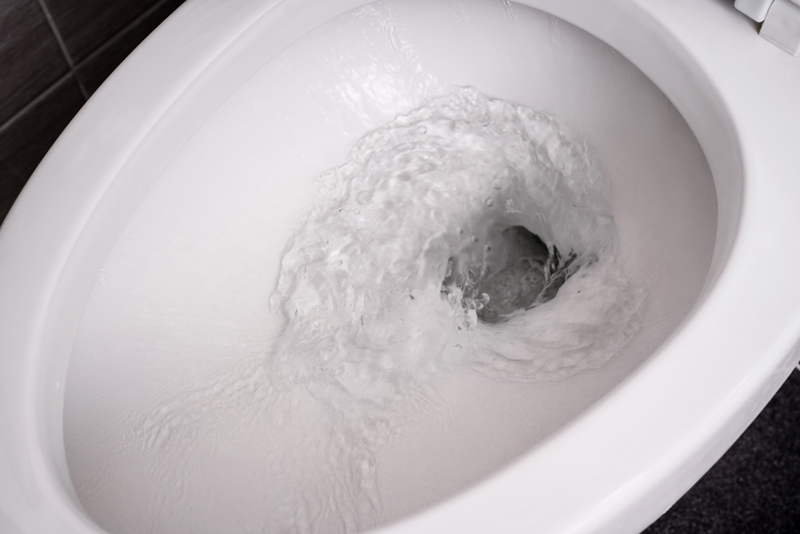
Experiencing low water pressure in your toilet can be a frustrating issue. It can lead to inefficient flushing, frequent clogs, and a generally unsatisfactory bathroom experience. Understanding the common causes and how to fix them can save you from costly plumber visits and ensure your toilet functions smoothly. Why is my water pressure low in my toilet? This post will explore the reasons behind low water pressure in your toilet and provide practical solutions to fix it.
Common Causes of Low Water Pressure in Toilets
- Clogged Rim Holes
- Cause: Over time, the rim holes located under the toilet bowl’s rim can become clogged with mineral deposits, debris, or hard water scale.
- Symptoms: Reduced water flow during flushing, weak flush, or uneven water distribution.
- Solution: Clean the rim holes with a small wire brush or a toothpick. For severe clogs, use a solution of vinegar and baking soda. Pour the mixture into the overflow tube and let it sit for several hours before scrubbing the holes again.
- Faulty Fill Valve
- Cause: The fill valve controls the flow of water into the toilet tank. If it’s damaged or malfunctioning, it can restrict water flow.
- Symptoms: Slow tank refill, weak flush, or no water entering the tank.
- Solution: Inspect the fill valve for damage or wear. Adjust the valve according to the manufacturer’s instructions, or replace it if necessary. Fill valves are relatively inexpensive and can be found at most hardware stores.
- Low Water Level in the Tank
- Cause: If the water level in the tank is set too low, there won’t be enough pressure to ensure a powerful flush.
- Symptoms: Weak or incomplete flushes.
- Solution: Adjust the float mechanism inside the tank to raise the water level. The ideal water level is about an inch below the top of the overflow tube. This adjustment is typically done by turning a screw or sliding a clip along the float rod.
- Blocked or Partially Closed Shut-Off Valve
- Cause: The shut-off valve controls water flow to the toilet. If it’s not fully open or is partially blocked, it can reduce water pressure.
- Symptoms: Slow filling tank, weak flush.
- Solution: Check the shut-off valve located on the wall behind the toilet. Ensure it’s fully open by turning it counterclockwise. If the valve is old or corroded, it may need to be replaced.
- Issues with the Flapper Valve
- Cause: The flapper valve controls the release of water from the tank to the bowl during flushing. If it doesn’t open fully, it can restrict water flow.
- Symptoms: Incomplete flush, weak flush.
- Solution: Inspect the flapper valve for wear, damage, or misalignment. Replace it if necessary. Ensure the chain connecting the flush lever to the flapper is not too short or too long, as this can affect the valve’s operation.
- Mineral Deposits in Pipes
- Cause: In areas with hard water, mineral deposits can accumulate inside the pipes, restricting water flow.
- Symptoms: Gradual reduction in water pressure over time.
- Solution: If you suspect mineral buildup, you might need to clean the pipes using a descaling solution. In severe cases, you may need to consult a plumber for professional cleaning or pipe replacement.
- Municipal Water Supply Issues
- Cause: Sometimes, the issue lies with the municipal water supply. Maintenance work, pressure changes, or other issues can affect water pressure.
- Symptoms: Sudden or intermittent low water pressure in multiple fixtures.
- Solution: Contact your local water utility to report the problem and inquire if there are ongoing issues. They can provide information on any maintenance work or pressure adjustments that might be affecting your home.
- Toilet Design and Efficiency
- Cause: Some low-flow or water-saving toilets are designed to use less water, which can sometimes result in a perceived reduction in pressure.
- Symptoms: Consistently weak flush despite no apparent mechanical issues.
- Solution: Ensure that the toilet is designed for your needs. If you consistently experience issues, you might consider upgrading to a newer model with better flushing technology, such as pressure-assisted toilets.
Practical Steps to Fix Low Water Pressure in Your Toilet
- Identify the Problem: Begin by determining the specific cause of the low water pressure. Check the water level in the tank, inspect the fill and flapper valves, and ensure the shut-off valve is fully open.
- Clean and Maintain: Regular maintenance can prevent many issues. Clean the rim holes, fill valve, and flapper valve periodically to prevent mineral buildup and debris accumulation.
- Replace Worn Parts: Toilet parts like the fill valve, flapper, and float mechanism can wear out over time. Replacing these parts is often a simple and inexpensive fix.
- Consult a Professional: If you’ve tried the above steps and still experience low water pressure, it may be time to call a plumber. There could be more complex issues, such as hidden leaks or significant mineral buildup in the pipes.
- Consider Upgrades: If your toilet is old, upgrading to a newer model with advanced flushing technology might resolve persistent low pressure issues and improve overall performance.
Conclusion
Low water pressure in your toilet can be a hassle, but understanding the common causes and how to fix them can help you resolve the issue quickly. Regular maintenance, prompt repairs, and occasional upgrades can ensure your toilet operates efficiently and reliably. By following these tips and solutions, you can restore proper water pressure and enjoy a fully functional bathroom once again.
 WEWE Kitchen Faucets
WEWE Kitchen Faucets

您好!please sign in